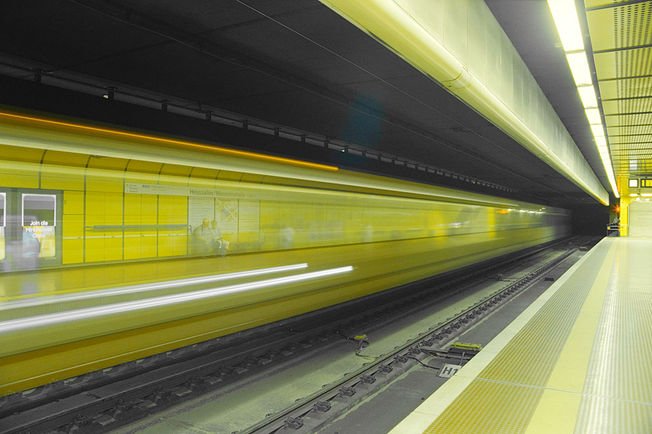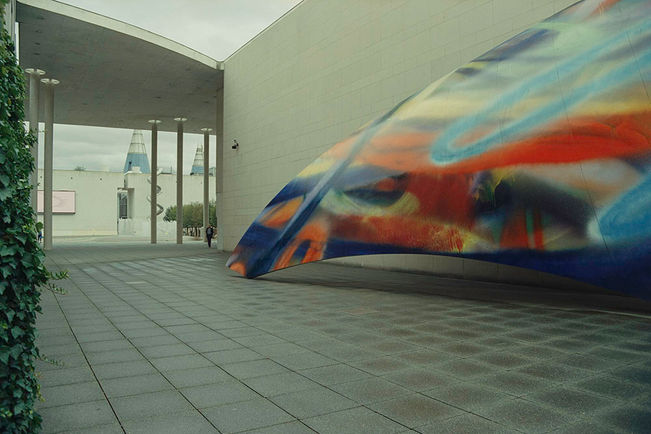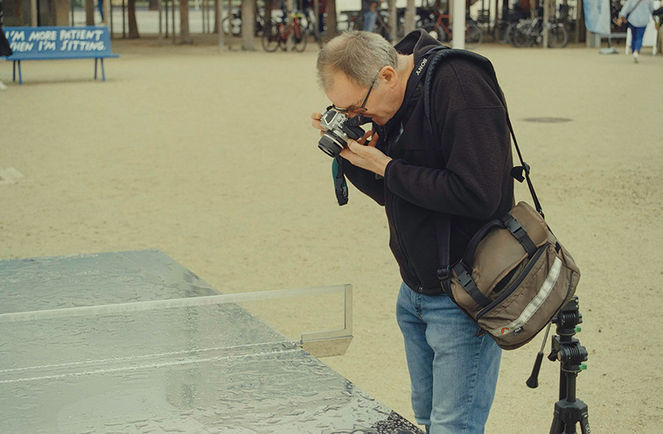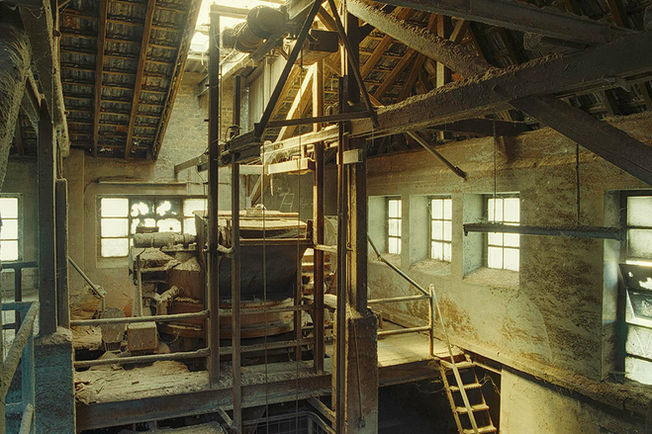
Kodak Motion Picture Film and Apollon Scan - click here for the english text
Fotografiert ihr genauso gerne mit analogen Kameras wie ich? Liebt ihr auch das Gefühl dieser Kameras und das satte Klacken oder leise Klicken, wenn ihr den Auslöser betätigt? Aber nachdem der Film belichtet und entwickelt wurde, möchtet ihr eure Bilder als digitale Dateien haben.
Es gibt viele Unternehmen auf dem Markt, die Ihnen qualitativ hochwertige digitale Dateien von Ihrem 35-mm- oder Rollfilm liefern können.
Aber es gibt auch die absolute Profi-Liga in Sachen Filmmaterial und Scannen, die noch bezahlbar ist.
Vorab: Ich werde für diesn Artikel noch für das verlinkte Video nicht bezahlt, ich gebe nur meine Erfahrungen und meine Meinung weiter.
Der Markt für Farbnegativfilme ist mittlerweile recht überschaubar. Die Preise für Farbnegativmaterial sind in den letzten Jahren immer mehr gestiegen, hinzu kommen die Kosten für die Entwicklung und das Scannen des Filmmaterials.
Für einen Kodak Gold 200 werden Preise ab 10 Euro pro Film mit 36 Aufnahmen aufgerufen, ein Kodak Porta 400 mit 36 Aufnahmen kostet schon über 17 Euro und ein LomoChrome Color 92 ISO 400 kostet immerhin noch knapp 13 Euro (alle Preise Stand August 2023).
Eine typgerechte Entwicklung sowie ein qualitativ hochwertiger Scan schlagen mit 16 – 19 Euro zu Buche.
Bereits vor einigen Jahren habe ich einen kurzen Bericht über die Firma silbersalz aus Stuttgart veröffentlicht.
Sie bieten zum einen exzellentes Filmmaterial an: Kodak Motion Picture Film Vision 3, und zum anderen in einem Komplettpaket dazu die typgerechte Entwicklung sowie einen Scan in höchster Qualität.
Vorsicht Remjet!
Diese Motion Picture Filme können allerdings nicht einfach zu einem beliebigen Fotolabor gebracht werden. Sie sind mit einer sogenannten Remjetbeschichtung ausgestattet, eine sichtbare schwarze Schicht.
Der Remjet ist eine Schutzschicht, welche auf der Rückseite des Films angebracht ist. Auf der Vorderseite befindet sich hingegen die Emulsion. Der Remjetbeschichtung schütz den Film vor Kratzern, statischer Entladung und Reflektionen um die Highlights.
Es ist wahrscheinlich das wirksamste Anti-Halogenierungs-Trägermaterial, das bisher hergestellt wurde.
Diese schwarze Schicht muss allerdings zwingend vor der Entwicklung des Films entfernt werden.
Da der Entwicklungsprozess C41 nur für Colornegativfilme ohne diese Schutzschicht gedacht ist, dürfen diese Filme nicht zu einem Standardlabor gebracht werden. Die Schutzschicht würde die Entwicklungssubstanzen sowie gegebenenfalls auch die eingesetzten Maschinen beschädigen.
Motion Picture Filme werden daher in einem speziellen Prozess entwickelt: ECN 2.
Dieser Prozess entfernt die Remjetschutzschicht und ist speziell auf diese Filmtypen abgestimmt, sodass die größtmögliche Farbtreue- und wiedergabe erreicht wird!
Theoretisch könnt ihr diese Filme auch nach Entfernung des Remjets zu Hause im C 41 Prozess entwickeln, dadurch erreicht ihr aber nicht die Qualität, die dieses Filmmaterial bietet.
Um das deutlich zu machen:
Die Verarbeitung nach vorheriger Entfernung der Remjet - Schutzschicht mit C-41 Chemikalien wird zu einer deutlichen Verschlechterung der Farb- und Kontrastwiedergabe führen.
In der Regel werden Kodak Motion Picture Filme für die Produktion von Kinofilmen, aber auch für Werbefilme verwendet - also für die Kinematografie, die Kunst und Technik der Bewegtbildfotografie.
Sie umfasst Techniken wie die allgemeine Komposition einer Szene, die Beleuchtung des Sets oder des Drehorts, die Wahl der Kameras, Objektive, Filter und des Filmmaterials, den Kamerawinkel und die Kamerabewegungen sowie die Integration von Spezialeffekten.
Einige Filme aus den letzten Jahren wurden tatsächlich nicht digital gefilmt, sondern ganz oder teilweise auf analogen Filmmaterial gedreht, hier seht ihr ein paar Beispiele:

Auch Star Wars ist mit dabei:

Kodak Motion Picture Filme Vision 3 werden in vier verschiedenen Filmempfindlichkeiten bez. Farbabstimmungen geliefert. Klicke, wenn gewünscht, auf die Bezeichnung des jeweiligen Films zum Download des Datenblatts.

Für die Fotografie empfiehlt silbersalz35 die Überbelichtung um einen Blendenwert, sodass die effektive Filmempfindlichkeit jeweils um diesen Wert abnimmt. Der DX-Code auf den Patronen gibt diese Information bereits an die Kamera weiter, die (wenn sie kompatibel ist und DX-Codes lesen kann) automatisch eine Überbelichtung um eine Stufe einstellt. Eine 500T würde der Kamera in diesem Fall sagen: "Ich habe ISO 250".
Auf Wunsch ist aber ebenso eine Push (1 Stufe höhere ISO) oder Pull (1 Stufe geringere ISO) Entwicklung möglich . beachtet bitte trotzdem die Empfehlung zur generellen Belichtung von plus einer ISO Stufe.
Auch ist das "BBP - Bleach Bypass Processing" möglich.
Es bietet einen noch filmischeren und einzigartigeren Look.
Bei der BBP-Behandlung wird das Bleichbad übersprungen. Und warum? Durch das Weglassen des Bleichbades erhält man viel mehr Kontrast und eine viel geringere Sättigung, besonders in den Rot- und Blautönen.
Einige bekannte Kameraleute, die Bleach Bypass Processing verwendet haben, sind Darius Khondji, Dariusz Wolski, Walter Carvalho, Oliver Stapleton, Newton Thomas Sigel und Janusz Kamiński (insbesondere bei Steven Spielbergs "Der Soldat James Ryan" und "Minority Report").
Bei Verwendung von BBP empfehlt silbersalz35 die Belichtung von SILBERSALZ35 Filmen mit der Nennempfindlichkeit des Films.
Neben den hervorragenden Eigenschaften dieses Filmmaterials bietet silbersalz35 dazu eine Scanqualität, die bisher nirgends erreicht wurde. Jedes Bild wird mit einer Auflösung von 14k gescannt!
Silbersalz35 schreibt dazu auf der Homepage:
„Wir scannen jeden Film mit unserem selbstentwickelten, brandneuen APOLLON 14K SCANNER mit unserer genialen und einzigartigen Farbwissenschaft.“
In der Standardversion (HIGH QUALITY) wird die Auflösung deiner Scans 4000 x 2480 Pixeln betragen (9.920.000 Pixel).
Wenn du FULL QUALITY bestellst, haben deine Scans eine atemberaubende Auflösung von 14204 x 8719 Pixeln (123.844.676 Pixel).“
Allerdings beziehen sich diese Angaben auf den gesamten Scan eines Bildes, den du bekommst. Da die Scans größer als das eigentliche 35mm Format sind, haben die Bilder ohne den gescannten Rand eine geringere Auflösung von ca. 12600 x 8400 Pixeln (105.840.000 Pixel).
Und dies ist immer noch mehr als beeindruckend!
Dieser FULL QUALITY Scan ist für eine Zuzahlung von ungefähr 10 Euro zu haben (wenn du ein Set von 4 Filmen gekauft hast, sind dies nur 2,50 Euro pro Film).
Die Scans werden im Adobe RGB-Farbraum geliefert und mit einem Sensor gescannt, der eine Auflösung von bis zu 150 Megapixeln und 16 Bit RGB-Farbe pro Pixel hat.
Dieser Artikel nimmt die mit zur Zeit vor des Apollon-Scan.
Apollon 14K Scan von Silbersalz

Apollon 14K Scan von Silbersalz

Silbersalz liefert die gescannten Bilder im .jp2-Format, aber du kannst ebenso RAW-Dateien der Scans erhalten.
Silbersalz35 schreibt dazu: „Wählen Sie RAW OPTION für ultraflache, neutrale und wissenschaftliche Scans. Flache Scans werden ohne unsere beliebte SILBERSALZ-Farbwissenschaft geliefert: nur für erfahrene Coloristen und Bildbearbeitungsprofis empfohlen. Die Bilder werden ohne die korrekte Spiegelung oder Bilddrehung geliefert.“
Ein Komplettpaket aus 4 Filmen, inklusive typgerechter ECN 2 Entwicklung und HIGH QULITY Scan kostet 94,70 Euro (54,80 Euro für die Filme und 39,90 Euro für die Entwicklung und den Scan), dazu könnt ihr, nachdem ihr eure digitalen Bilder gesehen habt, entscheiden, ob ihr den Apollon 14K Scan für 10 Euro dazubuchen möchtet (10 Euro ebenso für 4 Filme, wenn als Set gekauft).
Ich selbst kaufe immer das Set bestehend aus 4 Filmen, da es die günstige Möglichkeit ist.
Dabei könnt ihr wählen, ob ihr 4 verschiedene Filme möchtet, also jeden verfügbaren Film einmal, oder aber ihr wählt 4 gleiche Filme, zum Beispiel 4x den 250D.
Sonderwünsche wie Pushentwicklung, Pullentwicklung, "BBP - Bleach Bypass Processing" oder das Erhalten von RAW-Dateien sind im Preis inbegriffen, allerdings gelten die gewünschten Verarbeitungssonderformen immer für das gesamte Set von 4 filmen. Kauft ihr die Filme einzeln, dann könnt ihr natürlich die Bearbeitungsvorgaben je Film wählen, wobei der Einzelfilmkauf deutlich teurer ist.
Vielleicht möchtest du zunächst dein gewohntes Filmmaterial bei silbersalz35 entwickeln und scannen lassen. Das Stuttgarter Unternehmen bietet dies auch für 19 verschiedene Filmtypen an, zum Beispiel für die Porta-Familie, Kodak Gold 200, Ektar 100, SUPERIA X-TRA 200 oder 400, PRO 400-H, aber auch für Colordia-Filme als so genannte Rückentwicklung für den EKTACHROME 100 oder VELVIA 100, aber auch ein XP-2 SUPER 400 fühlt sich bei silbersalz35 sehr wohl.
Ich bin von diesem Film und vor allem von der Verarbeitung des Anbieters silbersalz35 restlos überzeugt und natürlich habe ich dort schon mehrfach Filmsets bestellt.
Wenn ihr analog fotografieren wollt, dann probiert dieses Angebot einmal aus!
Einmal Kodak Motion Picture Film Vision 3 und silbersalz35 und ihr wollt nichts anderes…
Und nochmal: dies ist meine eigene Meinung, ich werde für diese Aussagen nicht von Silbersalz35 bezahlt!
Für mehr Informationen besucht die Seite silbersalz35.com und natürlich auch meine Seite apertureonepointfour.com. Auf meiner Seite erhaltet ihr alle Informationen rund um die analoge, hybride und digitale Fotografie, ebenso habe ich für euch zahlreiche Prospekte, Werbeblätter und Bedienungsanleitungen zum Download bereitgestellt. Apertureonepointfour hat für dich einen weiteren Artikel über den Koak Motion Picture Film Vision 3 verfasst!
Natürlich habe ich für euch auch ein Video über die Kodak Motion Picture Filme Vision 3 sowie dem Service von silbersalz35 gedreht. Beim Klick auf das unten stehende Video gelangt ihr zu einem externen Link auf YouTube. Viel Spaß beim Ansehen!
Mehr Themen, Tests, Reviews und Tipps findet ihr auf der Seite "Index"!
Do you like taking pictures with analogue cameras as much as I do? Do you also love the feel of these cameras and the rich clack or soft click when you release the shutter? But after the film is exposed and developed, you want to have your pictures as digital files.
There are many companies on the market that can provide you with high quality digital files from your 35mm or roll film.
But there is also the absolute professional league in terms of film material and scanning, which is still affordable.
First of all, I'm not being paid for this video, I'm just sharing my experience and opinion.
The market for colour negative film is now quite manageable. The prices for colour negative material have risen more and more in recent years, plus the costs for developing and scanning the film material.
For a Kodak Gold 200, prices start at 10 Euros per film with 36 exposures, a Kodak Porta 400 with 36 exposures costs over 17 Euros, and a LomoChrome Color 92 ISO 400 still costs just under 13 Euros (all prices as of August 2023).
Film processing and high quality scanning will cost between 16 and 19 Euros.
Already a few years ago I published a short report about the company silbersalz from Stuttgart.
On the one hand they offer excellent film material: Kodak Motion Picture Film Vision 3, as well as a complete package for type-compliant development and top-quality scanning.
Caution Remjet!
However, these films cannot simply be taken to any photo lab. They are equipped with a so-called Remjet coating, a visible black layer.
The remjet is a protective layer applied to the back of the film. The emulsion is on the front of the film. The remjet coating protects the film from scratches, static discharge and reflections around the highlights.
It is arguably the most effective anti-halation coating ever created.
However, it is imperative that this black layer be removed before the film is developed.
Since the C41 development process is only for color negative films without this protective layer, these films must not be taken to a standard lab. The protective layer would damage the developing substances and possibly also the machines used.
Therefore, motion picture films are developed in a special process: ECN 2.
This process removes the Rejet protective layer and is specifically designed for these types of films to achieve the highest possible color fidelity and reproduction!
Theoretically, you can develop these films at home using the C41 process after removing the Remjet, but this will not give you the quality that this film material offers.
To be clear:
The processing after the previous removal of the Remjet - protective layer with C-41 will lead to a significant deterioration of the color and contrast reproduction.
Kodak Motion Picture films are typically used in the production of motion pictures and commercials - in other words, cinematography, the art and technique of moving image photography.
It includes techniques such as the general composition of a scene, the lighting of the set or location, the choice of cameras, lenses, filters and film stock, the camera angle and movements, and the integration of special effects.
Some films from recent years were in fact not filmed digitally, but were shot entirely or partially on analogue film stock, here you can see a few examples:

Also Star Wars war filmed with Kodak Motion Picture Film...

Kodak Motion Picture Film Vision 3 is available in four different film sensitivities for color matching.
Click to download the sellsheet.

For photography, silversalz35 recommends overexposing by one f-stop so that the effective film speed is reduced by this value each time. The DX code on the cartridges already communicates this information to the camera, which (if it is compatible and can read DX codes) automatically sets the overexposure by one stop. In this case, a 500T would tell the camera "I have ISO 250".
However, push (1 stop higher ISO) or pull (1 stop lower ISO) development is also possible if desired. Please note the general exposure recommendation of plus one ISO step.
BBP - Bleach Bypass Processing is also available.
It provides an even more filmic and unique look.
With BBP processing, the bleach bath is skipped. And why is that? By skipping the bleach bath, you get much more contrast and much less saturation, especially in the reds and blues.
Some notable cinematographers who have used Bleach Bypass Processing are Darius Khondji, Dariusz Wolski, Walter Carvalho, Oliver Stapleton, Newton Thomas Sigel, and Janusz Kamiński (most notably on Steven Spielberg's Saving Private Ryan and Minority Report).
When using BBP, silbersalz35 recommends exposing SILBERSALZ35 film at the film's rated speed.
In addition to the excellent properties of this film material, silbersalz35 offers a scanning quality that has never been achieved before. Each image is scanned with a resolution of 14k!
Silbersalz35 writes on their homepage:
"We scan every film with our self developed, brand new APOLLON 14K SCANNER with our ingenious and unique color science.
In the standard version (HIGH QUALITY) the resolution of your scans will be 4000 x 2480 pixels (9.920.000 pixels).
If you order FULL QUALITY, your scans will have a stunning resolution of 14204 x 8719 pixels (123,844,676 pixels)".
This FULL QUALITY scan is available for about 10 Euros (if you buy a set of 4 films, that's only 2.50 Euros per film).
However, these numbers refer to the entire scan of an image that you receive. Since the scans are larger than the actual 35mm format, the images without the scanned border have a lower resolution of about 12600 x 8400 pixels (105,840,000 pixels).
And that is still impressive!
The scans are delivered in Adobe RGB color space and scanned with a sensor that has a resolution of up to 150 megapixels and 16 bits of RGB color per pixel.
This article is about the time before the Apollo scan.
Apollon 14K scan by silbersalz35

Apollon 14K scan by silbersalz35

Silbersalz delivers the scanned images in .jp2 format, but you can also get RAW files of the scans.
Silbersalz35 writes: "Choose RAW OPTION for ultra flat, neutral and science scans. Flat scans are delivered without our popular Silbersalz color science: recommended for experienced colorists and image processing professionals only. Images are delivered without proper flipping or image rotation".
A complete package of 4 films, including type-appropriate ECN 2 development and HIGH QULITY scanning costs 94.70 Euros (54.80 Euros for the films and 39.90 Euros for the development and scanning), plus you can decide, after you have seen your digital images, whether you want to add the Apollon 14K scan for 10 Euros (10 Euros also for 4 films, if bought as a set).
I always buy the set of 4 films because it is the cheapest option.
You can choose whether you want 4 different films, i.e. each available film once, or 4 films of the same type, e.g. 4x 250D.
Special requests such as push processing, pull processing, BBP (Bleach Bypass Processing), or RAW file preservation are included in the price, but the requested special processing always applies to the entire set of 4 films. If you buy the films individually, you can of course choose the processing presets for each film, but buying each film individually is significantly more expensive.
You also have the option to have your developed films returned to you. For this service silbersalz35 charges 4.90 Euro plus 9.90 Euro shipping costs. It pays off to order new films directly, because shipping is currently free for orders over 80 Euros.
Perhaps you would like to have your usual film material developed and scanned at silbersalz35. The Stuttgart-based company offers this for 19 different film types, for example for the Porta family, Kodak Gold 200, Ektar 100, SUPERIA X-TRA 200 or 400, PRO 400-H, but also for Colordia films as so-called reverse development for the EKTACHROME 100 or VELVIA 100, but also an XP-2 SUPER 400 feels very comfortable at silbersalz35.
I am completely convinced of this film and especially of the processing of the supplier silbersalz35 and of course I have already ordered film sets from them several times.
If you want to shoot analog, then try this offer!
Once Kodak Motion Picture Film Vision 3 and silbersalz35 and you will never want to go back...
And again: this is my own opinion, I am not paid by silbersalz35 for these statements!
For more information visit silbersalz35.com and of course my site apertureonepointfour.com. On my site you will find all information about analog, hybrid and digital photography, as well as numerous brochures, advertising leaflets and manuals for download. Apertureonepointfour has written another article about Koak Motion Picture Film Vision 3! Have fun browsing!
Of course I also made a video for you about the Kodak Motion Picture Films Vision 3 and the service of silbersalz35. Clicking on the video below will take you to an external link on YouTube. Have fun watching it!
You can find more topics, tests, reviews and tips on the "Index" page!

























